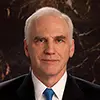The Brookings Institution is committed to quality, independence, and impact.
We are supported by a diverse array of funders. In line with our values and policies, each Brookings publication represents the sole views of its author(s).

Research
BPEA | Fall 2010
Fall 2010
The shadow banking system played a major role in the recent
financial crisis but remains largely unregulated. We propose principles for its
regulation and describe a specific proposal to implement those principles. We
document how the rise of shadow banking was helped by regulatory and legal
changes that gave advantages to three main institutions: money-market mutual
funds (MMMFs) to capture retail deposits from traditional banks, securitization
to move assets of traditional banks off their balance sheets, and repurchase
agreements (repos) that facilitated the use of securitized bonds as money. The
evolution of a bankruptcy safe harbor for repos was crucial to the growth and
efficiency of shadow banking; regulators can use access to this safe harbor
as the lever to enforce new rules. History has demonstrated two successful
methods for regulating privately created money: strict guidelines on collateral,
and government-guaranteed insurance. We propose the use of insurance for
MMMFs, combined with strict guidelines on collateral for both securitization
and repos, with regulatory control established by chartering new forms of
narrow banks for MMMFs and securitization, and using the bankruptcy safe
harbor to incentivize compliance on repos.